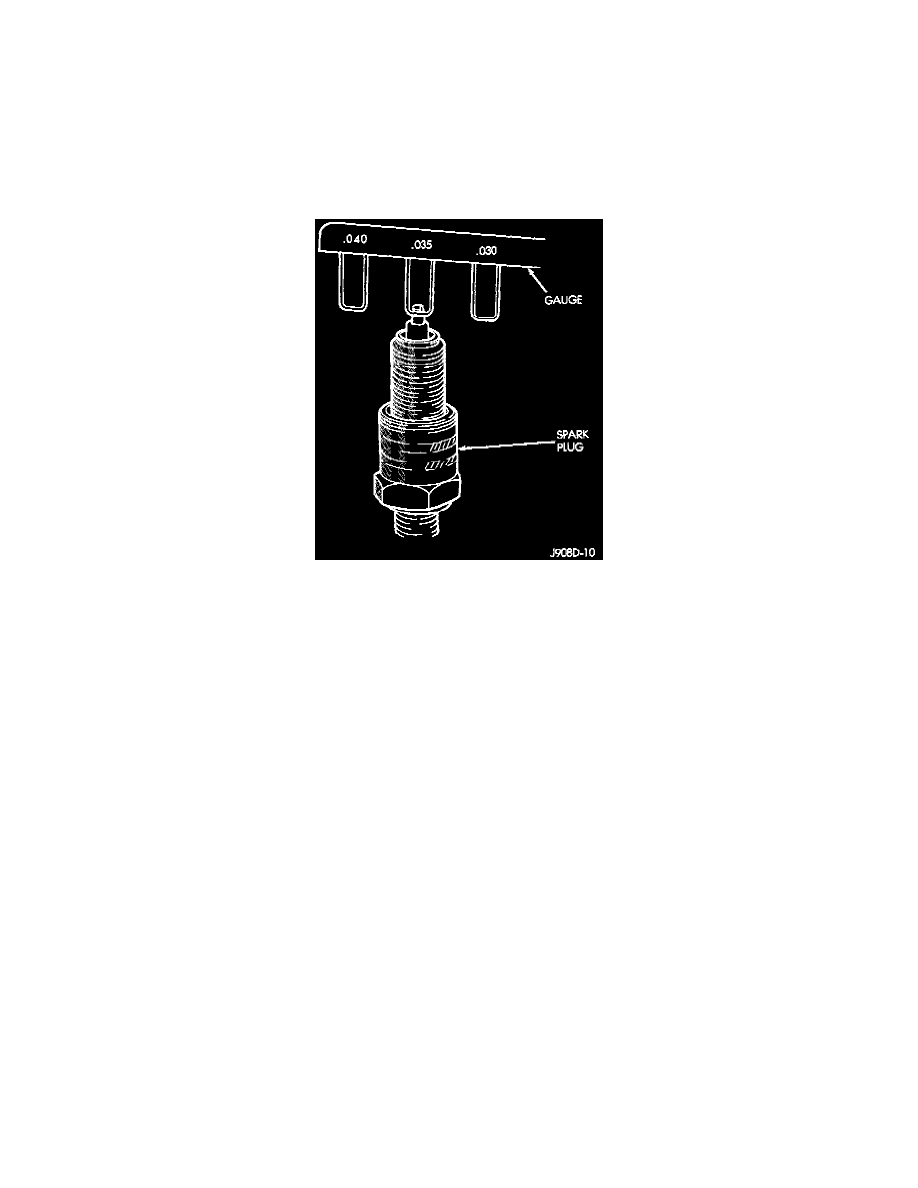RAM 2500 Van V8-5.9L VIN Z (1997)

foreign material from entering the combustion chamber.
5. Remove the spark plug using a quality socket with a rubber or foam insert.
6. Inspect the spark plug condition.
PLUG CLEANING
The plugs may be cleaned using commercially available spark plug cleaning equipment. After cleaning, file the center electrode flat with a small
point file or jewelers file before adjusting gap.
CAUTION: Never use a motorized wire wheel brush to clean the spark plugs. Metallic deposits will remain on the spark plug insulator and will
cause plug misfire.
Fig. 44 Setting Spark Plug Gap - Typical
PLUG GAP ADJUSTMENT
Check the spark plug gap with a gap gauge tool. If the gap is not correct, adjust it by bending the ground electrode. Never attempt to adjust the gap
by bending the center electrode.
SPARK PLUG GAP
0.89 mm (0.035 in).
PLUG INSTALLATION
Special care should be taken when installing spark plugs into the cylinder head spark plug wells. Be sure the plugs do not drop into the plug wells
as electrodes can be damaged.
Always tighten spark plugs to the specified torque. Over tightening can cause distortion resulting in a change in the spark plug gap or a cracked
porcelain insulator.
When replacing the spark plug and ignition coil cables, route the cables correctly and secure them in the appropriate retainers. Failure to route the
cables properly can cause the radio to reproduce ignition noise. It could cause cross ignition of the spark plugs or short circuit the cables to
ground.
1. Start the spark plug into the cylinder head by hand to avoid cross threading.
2. Tighten spark plugs to 35-41 N.m (26-30 ft. lbs.) torque.
3. Install left exhaust manifold heat shield
4. Install spark plug cables over spark plugs.
5. Install engine cover.
